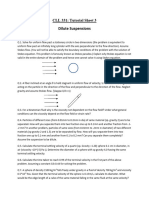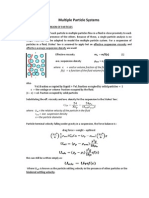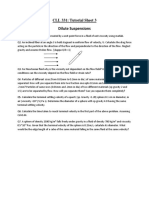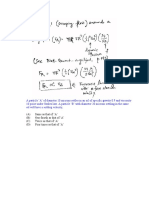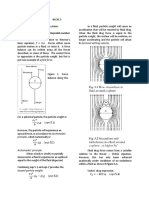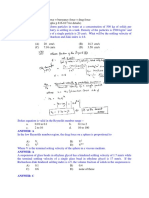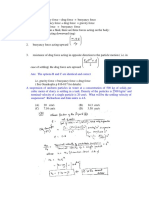CLL 331: Tutorial Sheet 2
Dilute Suspensions
Q 1. Draw the streamlines for the rotational flow and extensional flow component of simple shear flow,
𝑣! = 𝛾̇ 𝑦, 𝑣" = 0.
Q 2. Find out the equilibrium concentration profile of Brownian particles in a dilute suspension as a
function of height in a column. The size of the particles is a and density ρ’. Viscosity of the fluid is μ and
density ρ’’. (Hint: Balance the settling flux with the Brownian flux. A similar experiment was done by
Perrin in 1908)
Q 3. Compare the time taken by a particle (a) undergoing Brownian motion and (b) settling due to
gravity to travel a distance equal to its own size. Size of the particle 100 nm, fluid is water, temperature
is 300 K, and specific gravity of the particle is 1.1.
Q 4. Calculate the time scale over which a rigid spherical particle of diameter 10 micron will reach
terminal velocity in water. Assume the specific gravity of the particle to be 1.1.
Q 5. Calculate the relative drag forces acting on the two stagnant cubes shown in the following figure:
Uniform Uniform
Flow Flow
Cube q
Drag = Da Drag = Db
�Q 6. Calculate net torque acting on a spherical particle rotating in an unbounded stagnant fluid. The
radius of the particle is R, angular velocity is ω, viscosity of the fluid is μ, and density of the particle and
#$% !
the fluid is ρ. Assume &
≪ 1. Z
ω
θ
Y
Q 7. For a symmetric tensor prove,
𝜎 = ∇. (𝜎𝑟) − (∇. 𝜎)𝑟



